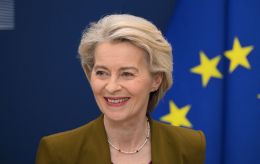Populists in power: How their strategies and ideology changing
 Illustrative photo: experts explained how populist strategies and ideology are changing (flick.com)
Illustrative photo: experts explained how populist strategies and ideology are changing (flick.com)
Currently, there is no single model of how populists change in the world when trying to come to power. However, we can already identify several trends in such changes, according to RBC-Ukraine's article Radicals' march. Why Europe elects populists and how it threatens Ukraine.
Populists are now inevitably reducing the radicalism of their views to gain the support of more voters.
According to Bertjan Verbeek, Professor of International Relations at Radboud University in Nijmegen, the decrease in radicalism has occurred in countries where several populist parties are competing for the same votes. This forces them to compete, shifting some to a more centrist position and others to a more radical one.
“This the case in Italy e.g. where Meloni's party has become a bit less radical, and the "Lega" has become more radical. In 2023 this was the case in the Netherlands with PVV suggesting to be more moderate on Europe and islam (at least in words) and "Forum for Democracy" being more radical,” the expert believes.
As for France, the reduction of the radicalism of the National Rally is a very long process that has not taken place over the past year. The party has already abandoned the idea of France leaving the European Union and then rejected the idea of leaving the eurozone.
“We see that the National Rally wants to transform its image and become a classic right-wing party. If it succeeds, the party will have a chance to come to power. But as long as this image of extremes remains, it scares the French conservative public. But it is difficult to predict this evolution,” said Oksana Mitrofanova, a researcher at the Jean Moulin University of Lyon 3.
In this context, the main challenge for populists is how to find a balance between attracting new voters and retaining the old, radical electorate. And much depends on the place in the ruling coalition occupied by populist parties. The main parties are more likely to shift toward moderation, while their junior partners are more likely to become more radical.
“In the case of Meloni, you are the main party, and you are the one that basically leads the government. If you lead the government, you can take a certain degree of freedom because then you are the face of the government. If you become a junior partner, then the risk is that you have to compromise with the mainstream. And if you look to compromise too much, you can lose your voters. Because your voters are mobilized by your radicalism,” Braghiroli, Associate Professor of European Studies at the University of Tartu, explained to the publication.
Read more about how and why radical populists are coming to power in Europe and how this threatens Ukraine in the RBC-Ukraine article.

